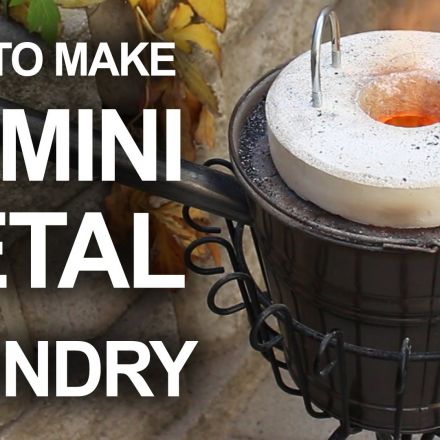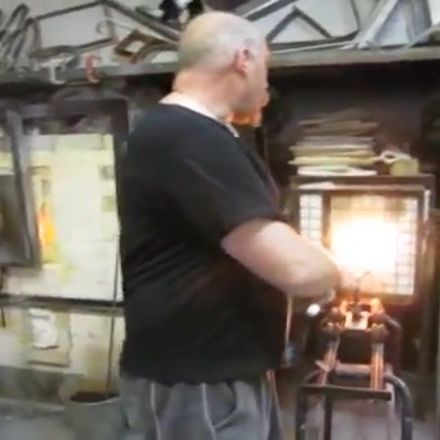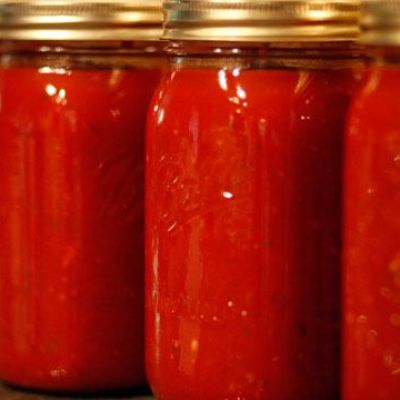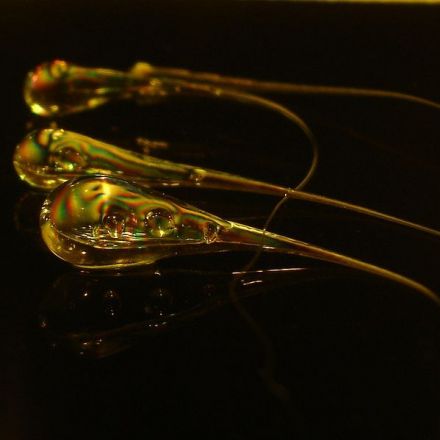How To Make The Mini Metal Foundry
How to make a simple backyard foundry for less than $20, for melting pop cans, and casting aluminum.
-
For this project I experimented with 10 different prototypes, to develop a reusable backyard foundry that melts aluminum soda cans easily and safely. I tested different refractory recipes, different containers, different setting for blowing air, and different types of makeshift crucibles.
I tried various ratios of portland cement, sand, perlite, plaster of paris, water, and even kitty litter. For containers, I experimented with clay pots, plastic buckets, no container, cinderblocks, and a galvanized steel pail.
I ended up favoring the galvanized steel pail, and a mix of 50% plaster of paris, and 50% play sand, by volume, which was inspired by a video by NightHawkInLight "How to Make a Soup Can Forge".
Depending on where you get, or find, your materials the cost can range anywhere from $5-$25 per unit. With the materials I used, I was able to make 2 units for under $40 ($20 each). Even on the high end, this is probably one of the cheapest, reliable, backyard foundries that can be made.
I used mine to melt soda cans, and extract the aluminum for future metal casting projects. All the soda cans came from a local recycling depot. I bought back 30 lbs from the depot to avoid having to drink gallons and gallons of soda. :) I stored the ingots in various forms, which you can see in the video”Melting Cans With The Mini Metal Foundry“.
The technique for making the sword in that video, and the gun in this video is called “Lost Foam Casting” and will be demonstrated in a future project video.
The purpose of my backyard foundry is to demonstrate the most basic setup for casting metals. However if you plan to attempt this approach yourself, some important things to consider beforehand are as follows:
Soda cans work really well, however aluminum cans are one of the worst sources for aluminum to cast with, and some soda cans in other parts of the world are actually made with steel. The alloy was meant for extrusion, so is not the best for casting. They also produce more dross (slag) because the thin walls oxidize quickly and the plastic coatings on the cans add impurities. A better source of aluminum for casting would be cast aluminum items from thrift stores, like electric skillets or small engine blocks from lawnmower shops.
The crucible I used was steel, but it’s important to note that steel can be soluble in molten aluminum. It’s possible that when you lift the crucible out of the foundry, the bottom can dissolve out and drop molten aluminum onto you feet and onto the ground. A good refractory crucible can be purchased for about $30 online.
Lastly, casting over concrete poses a small risk of steam explosions. If molten aluminum falls to the ground, it can superheat the moisture in the concrete and cause it to spall (steam explosion) where the aluminum lands. This can potentially send hot concrete and molten aluminum spraying everywhere. When possible, melt and pour metal over sand to minimize risks.
Note: Wearing polyester gloves like the ones I had in the video is risky because the material can melt into your hands if you get splashed by hot aluminum. This can potentially leave burns where the metal lands, ringed by plastic burned into the skin.





























Join the Discussion